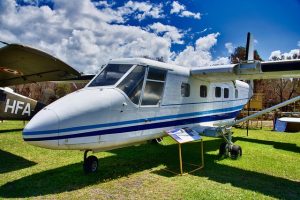
Not all airliners are narrow body or wide body. There are also regional airliners, which are characterized by their small size. Regional airliners have fewer than 100 seats. They are still used by commercial airlines to provide flight services, but they are smaller than both narrow-body and wide-body airliners. Below are six facts about regional airliners, some of which may surprise you.
#1) Commonly Used to Connect to Airline Hubs
Commercial airlines use regional airliners to connect to their main airline hubs. Passengers in rural areas, for instance, may take a regional airliner to a major city. From there, passengers will board a larger airliner, such as a wide-body airliner. Regional airliners allow commercial airlines to create a grid-like network of flights pointing to their main hubs.
#2) Also Known as ‘Feederliners’
Regional airliners are also known as “feederliners.” This is because they are used to “feed” larger airline hubs. As previously mentioned, regional airliners transport passengers from smaller airports to hub airports. They connect to a wider network of destinations served by larger commercial airlines.
#3) Short-Distance Flights
With their small size, regional airliners aren’t suitable for long-distance flights. Instead, they are used exclusively for short-distance flights. Statistics show that the average trip length of a regional airliner in 2020 was just a little over 500 miles.
#4) The First Turboprop Was the Vickers Viscount
The world’s first turboprop was a regional airliner known as the Vickers Viscount. Released in the mid-1900s, the Vickers Viscount had 75 seats. It was operated by several commercial airlines, including British European Airways, Capital Airlines, Trans-Canada Air Lines and Air Canada. The Vickers Viscount remained in service for over a half-century until it was officially retired in 2009.
#5) Available With Jet Engines
While some regional airliners have turboprop engines, others have jet engines. There are regional airliners powered by turbofan engines. Turbofan regional airliners became particularly popular in the 1990s. Examples of turbofan regional airliners include the Canadair Regional Jet, the Embraer E-Jet and the Embraer Regional Jet.
#6) Optimized for Fuel Efficiency
Regional airliners are optimized for fuel efficiency. With their small size, they have limited fuel storage capacities. On the other hand, manufacturers have designed regional airliners to conserve fuel. Whether it’s a turbofan or turboprop regional airliner, it will likely support short flights to main hubs without consuming a lot of fuel.



